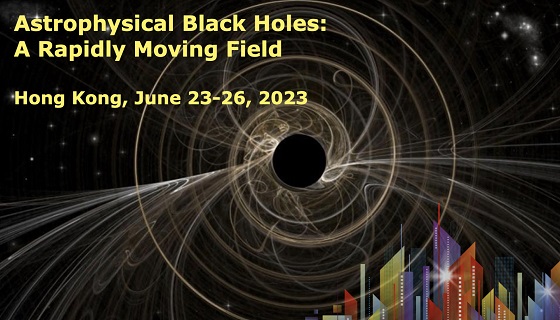Theoretical and observational studies of astrophysical black holes have been in rapid development in recent decades. This conference will present major breakthroughs and key remaining questions concerning our fundamental understanding of astrophysical black holes, such as the formation and collimation of relativistic jets, the accretion and growth of black holes, the measurement of black hole spin, the merger of black holes, the first images of black hole shadow, the particle acceleration mechanisms and transient phenomena around black holes, and the feedback from massive black holes to galaxies.
◎New Results on Astrophysical Black Holes from eROSITA
The eROSITA X-ray telescope was launched in July 2019 aboard the Spektrum-RG satellite. After a short performance verification phase, it has subsequently performed an X-ray all-sky survey of unprecedented depth. Accreting supermassive black holes in Active Galactic Nuclei(AGN) constitute the most numerous class of sources detected by eROSITA. The high sensitivity and large field of view of the instrument provide large sample sizes enabling robust statistical studies of the X-ray AGN population, as well as the first significant samples of the rarest objects, e.g. those at high redshift. The distinctive temporal sampling pattern provided by the survey also provides unique information about the variability of the X-ray sky. In this presentation, early AGN results from eROSITA will be reviewed. These have confirmed its potential to yield new insights into black hole demographics and accretion physics, and yielded a number of surprising new discoveries.
時間:2023.06.23(三) 10:40~11:15
講者:Prof. Kirpal Nandra
↓
↓
◎Black hole mass and the reverberation size-luminosity relation based on the 6-year Seoul National University Monitoring Project(SAMP)
Black hole mass is a key parameter for understanding black hole growth and AGN physics. The method of determining black hole has been rapidly evolved over the last 20 years. We will present the latest results of reverberation mapping (RM) studies based on the 6 year SNU monitoring project, using a sample of 32 AGNs with relatively high luminosity (L₅₁₀₀>10⁴⁴ erg/s). With hundreds of nights of regularly sampled spectroscopic/photometric observations, we successfully obtain reliable H beta lags and BH masses for 24 objects, finding that the BLR sizes of these objects are smaller than the expectation from the previous size-luminosity relation. By applying a uniform lag analysis to available H beta RM light curves from the literature, we remeasured the H beta lag of the most reliable ~100 AGNs, redefining the size--luminosity relation with a slope of 0.41±0.22 and an intrinsic scatter of 0.192 dex. For ~20 AGNs, we will present the velocity resolved lag measurements and discuss the implication of these results on the BLR properties. We will also present the H alpha size-luminosity relation and discuss new constraints on finding intermediate-mass black holes. Finally we will review the uncertainty of black hole masses based on the size-luminosity relation and single-epoch method.
時間:2023.06.23(三) 11:15~11:33
講者:Prof. Woo Jong-Hak (Seoul National University)
↓
↓
◎Signatures of binary supermassive black holes in AGNs from reverberation mapping and GRAVITY/interferometer
Binary supermassive black holes located in galactic nuclei produce gravitational waves with frequencies in the nano-Hz range, but their detection through observations remains elusive. Reverberation Mapping(RM) of Active Galactic Nuclei(AGNs) and the VLT interferometer are powerful tools that can reveal temporal and spatial resolution signatures of binary black holes. Here the speaker will present key signatures obtained through RM and GRAVITY observations.
時間:2023.06.23(三) 11:33~11:51
講者:Dr Wang Jian-Min
↓
↓
◎Hunting down stellar-mass black-holes with Gaia
Understanding the connection between the properties of Black-Holes(BHs) and their progenitors is interesting in many branches of astrophysics. Traditional methods such as detection through X-ray, radio, or gravitational-wave emission are sensitive towards a small subset of all BH binaries expected to form in nature. In my talk the speaker will explore the exciting possibilities for detecting BHs in detached binary systems with Luminous Companions(LCs) via astrometric and photometric measurements. The speaker and his team create highly realistic models of BH-LC binaries expected to be there at present in the Milky Way(MW) using the binary population synthesis code COSMIC for two adopted supernova models. Taking into account Gaia’s astrometric precision, spectroscopic resolution, and interstellar extinction and reddening, they find that Gaia in its 10 year mission should detect around 30-300 BH candidates. These potentially detectable BHs constitute a set complementary to those detected by other traditional methods. Furthermore, since the LC's properties, such as age and metallicity, can be constrained relatively easily, and it is expected that the BH's progenitor must have had the same zero-age properties as the LC, if detected in large numbers as their models suggest, for the first time, they will be able to constrain the highly uncertain map connecting BH properties with those of their progenitors. With Gaia's third Data Release(DR3), several dormant Compact-Object(CO) candidates have been detected. The speaker will discuss how well their predictions match with the recently detected dormant candidate CO properties. Finally, he will also explain why the DR3 candidates consist mainly of white dwarfs and neutron stars, but not BHs in large numbers as was predicted by several theoretical studies including theirs.
時間:2023.06.23(三) 11:51~12:09
講者:CHAWLA, Chirag (Tata Institute of Fundamental Research)
↓
↓
地點:香港大學 百週年校園 CPD 3.04 Centennial Campus
語言:英語
是會議作坊,參加者必須登記,2023.04.30 截止
【此屬轉載訊息,以主事單位發佈為準】
此活動由香港大學物理系主辦。
https://astrobh.physics.hku.hk/event/3/timetable/#all.detailed


